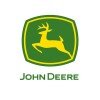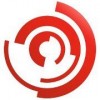Junior Engineer Trainee
70+ Junior Engineer Trainee Interview Questions and Answers
Asked in Jbm Nmpl

Q. How can the power factor be improved?
Power factor can be improved by using capacitors, reducing reactive power, and improving system design.
Installing power factor correction capacitors can reduce reactive power and improve power factor.
Reducing the use of inductive loads and increasing the use of capacitive loads can improve power factor.
Improving system design by minimizing voltage drops, using efficient transformers, and properly sizing conductors can improve power factor.
Implementing power factor correction ...read more

Asked in L&T Defence

Q. 1.what is elasticity. 2.What is Howks low. 3.How to draw 2d and 3D views. 4.Measurement instruments types and List count. 5.NDT full form 6.DPT full form 7.Draw the stress strain curve drawing 8. whats is elast...
read moreQuestions related to engineering concepts and instruments.
Elasticity is the ability of a material to regain its original shape after being stretched or compressed.
Hooke's law states that the force required to extend or compress a spring is directly proportional to the distance it is extended or compressed.
2D and 3D views can be drawn using software like AutoCAD or SolidWorks.
Measurement instruments include rulers, calipers, micrometers, and gauges.
NDT stands for Non-Destructi...read more
Junior Engineer Trainee Interview Questions and Answers for Freshers

Asked in JSW Steel

Q. Difference between Conductor, semiconductor and insulator
Conductors, semiconductors, and insulators are materials that differ in their ability to conduct electricity.
Conductors have high electrical conductivity and allow the flow of electric current easily.
Semiconductors have moderate electrical conductivity, which can be controlled by adding impurities or applying voltage.
Insulators have very low electrical conductivity and do not allow the flow of electric current.
Conductors include metals like copper, silver, and gold.
Semiconduc...read more
Asked in Dharaksha Ecosolutions

Q. What is the difference between a two-stroke and a four-stroke engine?
Two stroke and four stroke engines differ in their working cycles and efficiency.
Two stroke engines complete a power cycle in two strokes of the piston, while four stroke engines complete it in four strokes.
Two stroke engines have a simpler design and are lighter, but are less fuel efficient and produce more emissions.
Four stroke engines have separate intake, compression, power, and exhaust strokes, resulting in better fuel efficiency and lower emissions.
Examples of two strok...read more

Asked in JSW Steel

Q. Types of renewable sources of energy
Renewable sources of energy are natural resources that can be replenished and are not depleted with use.
Solar energy: harnessing the power of the sun through solar panels
Wind energy: converting wind into electricity using wind turbines
Hydroelectric power: generating electricity from flowing or falling water
Geothermal energy: utilizing heat from the Earth's core
Biomass energy: converting organic matter into fuel
Tidal energy: capturing energy from the tides
Wave energy: harnessi...read more

Asked in L&T Heavy Engineering

Q. What are gears and what are the different types of gears?
Gears are mechanical devices that transmit motion and power between rotating shafts. There are various types of gears including spur, helical, bevel, and worm gears.
Gears are mechanical components with teeth that mesh with each other to transmit motion and power.
Spur gears are the most common type, with straight teeth parallel to the gear axis.
Helical gears have angled teeth for smoother and quieter operation.
Bevel gears have cone-shaped teeth and are used to change the direc...read more
Junior Engineer Trainee Jobs




Asked in L&T–MHI Power Boilers

Q. What are connections and joints in steel design?
Connections and joints are important aspects of steel design that ensure stability and strength of the structure.
Connections refer to the way steel members are joined together to form a structure.
Joints are the points where two or more members meet.
Proper connection and joint design is crucial for ensuring the safety and stability of the structure.
Examples of connections include bolted connections, welded connections, and riveted connections.
Examples of joints include lap joi...read more

Asked in Spm Autocomp

Q. Materials which is used ,how to increase quality of product,machine
To increase the quality of a product or machine, the choice of materials is crucial.
Select high-quality materials that meet the required specifications
Ensure proper material testing and quality control
Implement effective manufacturing processes and techniques
Regular maintenance and calibration of machines
Continuous improvement through feedback and analysis
Share interview questions and help millions of jobseekers 🌟


Asked in L&T–MHI Power Boilers

Q. What are the various tests done on-site?
Various tests are done on site to ensure quality and safety of construction work.
Soil testing to determine the bearing capacity of the soil
Concrete testing to check its strength and durability
Water testing to ensure it is safe for construction purposes
Asphalt testing to determine its quality and suitability for use
Non-destructive testing to detect defects in structures without damaging them
Load testing to check the strength of structures under load
Electrical testing to ensure...read more

Asked in John Deere

Q. What is the working mechanism of a governor in a Fuel Injection Pump (FIP)?
A governor in a Fuel Injection Pump (FIP) controls the amount of fuel injected into the engine based on engine speed.
The governor senses the engine speed and adjusts the fuel delivery accordingly.
It maintains a constant engine speed by controlling the fuel injection rate.
There are different types of governors such as mechanical, electronic, and hydraulic governors.
Examples of governors in FIPs include flyweight governors and electronic control units (ECUs).

Asked in NTPC

Q. What is the difference between electrical and electronics engineering?
Electrical engineering focuses on power generation and distribution, while electronics engineering deals with electronic devices and circuits.
Electrical engineering deals with large-scale power systems, such as power plants and electrical grids.
Electronics engineering focuses on small-scale electronic devices, such as computers, smartphones, and microchips.
Electrical engineering involves the study of power generation, transmission, and distribution.
Electronics engineering inv...read more

Asked in Axiscades

Q. What is the difference between stress and strain?
Stress is the force applied to a material, while strain is the resulting deformation or change in shape.
Stress is a measure of the internal forces within a material, while strain is the measure of the deformation or change in shape.
Stress is typically measured in units of force per unit area (such as N/m^2 or Pa), while strain is a dimensionless quantity.
Stress can cause a material to deform, leading to strain. The relationship between stress and strain is described by the ma...read more

Asked in L&T Heavy Engineering

Q. What is the significance of engineering drawing?
Engineering drawing is a visual communication tool used by engineers to convey ideas, designs, and instructions.
Engineering drawings provide a detailed visual representation of an object or structure.
They include dimensions, materials, and other specifications necessary for manufacturing and construction.
Engineering drawings help ensure accuracy and consistency in the production process.
They serve as a universal language for engineers and technicians to communicate complex id...read more

Asked in Exide Industries

Q. What is stand for SAP and how to manage material using SAP hana s4
SAP stands for Systems, Applications, and Products in Data Processing, used for managing materials in S/4HANA.
SAP S/4HANA integrates real-time data processing for efficient material management.
Material Master Data is central to managing materials, containing all relevant information.
Use the Material Document to track inventory movements, such as goods receipts and issues.
Leverage the MRP (Material Requirements Planning) module to forecast material needs.
Example: Create a Purc...read more

Asked in SRF

Q. Why is the upper section of a distillation column called the rectifying section?
The upper section of a distillation column is called the rectifying section because it helps to separate the components based on their boiling points.
The rectifying section of a distillation column is where the vapor rises and gets enriched with the more volatile component.
This section helps in achieving the desired separation of components by condensing the vapor at different levels based on their boiling points.
The rectifying section is crucial in achieving high purity of t...read more

Asked in Jindal Stainless

Q. What is the construction and line diagram of a centrifugal pump?
A centrifugal pump consists of an impeller, casing, and suction/discharge pipes. The line diagram shows the flow of fluid through the pump.
Construction includes impeller, casing, suction pipe, and discharge pipe
Impeller rotates to create centrifugal force, pushing fluid outwards
Suction pipe brings fluid into the pump, discharge pipe sends it out
Line diagram shows the flow path of fluid through the pump

Asked in JSW Steel

Q. Types of temperature coefficient
There are two types of temperature coefficient: positive and negative.
Positive temperature coefficient (PTC) - resistance increases with temperature
Negative temperature coefficient (NTC) - resistance decreases with temperature
PTC is used in thermistors for overcurrent protection
NTC is used in temperature sensors for temperature measurement

Asked in Navitasys India

Q. What is an inverter? Draw a diagram and explain its working principle in detail.
Inverter एक इलेक्ट्रॉनिक उपकरण है जो DC को AC में परिवर्तित करता है।
इन्वर्टर का मुख्य कार्य DC (डायरेक्ट करंट) को AC (अल्टरनेटिंग करंट) में बदलना है।
यह बैटरी से ऊर्जा को लेकर उसे AC में परिवर्तित करता है, जिससे घरेलू उपकरण चलाए जा सकते हैं।
उदाहरण: सौर ऊर्जा प्रणाली में, सौर पैनल DC उत्पन्न करते हैं, जिसे इन्वर्टर AC में बदलता है।
इन्वर्टर के विभिन्न प्रकार होते हैं, जैसे कि साइन वेव इन्वर्टर, modified sine wave inverter, आदि।
इन्वर्टर का उपयोग UPS (अनइंटरप्टिबल पावर सप्लाई) में...read more

Asked in Uflex

Q. What is drilling and boring?
Drilling is creating holes in materials, while boring enlarges existing holes for precision and smoothness.
Drilling involves using a drill bit to create holes in various materials like metal, wood, or plastic.
Boring is a machining process that enlarges a hole to achieve a precise diameter and smooth finish.
Example of drilling: Making holes for screws in wood.
Example of boring: Enlarging a hole in a metal part for a precise fit.
Asked in Aitsil Spv

Q. What is the function of a turbocharger?
A turbocharger is a device that increases the efficiency and power output of an internal combustion engine.
A turbocharger uses exhaust gases to drive a turbine, which in turn drives a compressor to force more air into the engine.
By increasing the amount of air entering the engine, a turbocharger allows more fuel to be burned, resulting in increased power.
Turbochargers are commonly used in diesel engines and high-performance gasoline engines.
They help improve fuel efficiency b...read more

Asked in Tata Chemicals

Q. What is an induction motor, and what are its working principles?
An induction motor is an AC electric motor in which the electric current in the rotor is produced by electromagnetic induction from the magnetic field of the stator winding.
Induction motor is a type of AC motor
It works on the principle of electromagnetic induction
The stator winding produces a rotating magnetic field
This induces a current in the rotor, which also produces a magnetic field
The interaction of the two magnetic fields causes the rotor to rotate
Used in various appli...read more

Asked in Ford Motor

Q. What do you understand by the term tooling?
Tooling refers to the process of designing and manufacturing tools or equipment used in production or manufacturing processes.
Tooling involves creating specialized tools or equipment for specific tasks
It can include designing, prototyping, and manufacturing tools
Tooling is essential for efficient and accurate production processes
Examples include molds for injection molding, jigs for welding, and fixtures for assembly

Asked in Wabtec

Q. Alternator working process & working principle
An alternator is a device that converts mechanical energy into electrical energy through electromagnetic induction.
Alternator works on the principle of Faraday's law of electromagnetic induction
It consists of a rotor, stator, and diode rectifier
The rotor rotates inside the stator, which contains a set of stationary coils
As the rotor spins, it creates a magnetic field that induces an alternating current (AC) in the stator coils
The diode rectifier converts the AC to direct curr...read more

Asked in Navitasys India

Q. What subjects did you study in the previous semester? Please list them.
मैंने पिछले Semester में कई तकनीकी और प्रायोगिक विषय पढ़े, जो मेरी इंजीनियरिंग की नींव को मजबूत करते हैं।
1. गणित - जैसे कि कलन, सांख्यिकी, और रेखीय बीजगणित।
2. भौतिकी - जिसमें यांत्रिकी और विद्युत चुंबकत्व शामिल हैं।
3. इंजीनियरिंग ग्राफिक्स - जिसमें CAD सॉफ्टवेयर का उपयोग किया गया।
4. सिविल इंजीनियरिंग - जिसमें निर्माण तकनीक और सामग्री विज्ञान शामिल हैं।
5. कंप्यूटर प्रोग्रामिंग - जैसे C और C++ में प्रोग्रामिंग।

Asked in Jindal Stainless

Q. What is SOF in the design of machine elements?
SOF stands for Strength of Material. It is a branch of engineering that deals with the behavior of solid objects subjected to stresses and strains.
SOF is essential in the design of machine elements to ensure they can withstand the loads and forces they will experience during operation.
It involves analyzing the material properties, stress distribution, and deformation of the components.
Calculations in SOF help determine the appropriate size, shape, and material for machine ele...read more

Asked in Force Motors

Q. What are the differences between diesel and petrol engines?
Diesel engines and petrol engines differ in fuel type, ignition process, compression ratio, and efficiency.
Fuel type: Diesel engines use diesel fuel, while petrol engines use gasoline.
Ignition process: Diesel engines use compression ignition, while petrol engines use spark ignition.
Compression ratio: Diesel engines have higher compression ratios than petrol engines.
Efficiency: Diesel engines are generally more fuel-efficient than petrol engines.
Examples: Cars, trucks, and bus...read more

Asked in SRF

Q. Why is it called a positive displacement pump?
Positive displacement pumps are named so because they displace a specific amount of fluid with each cycle of operation.
Positive displacement pumps move fluid by trapping a fixed amount and forcing it through the discharge pipe.
They provide a constant flow rate regardless of changes in discharge pressure.
Examples include gear pumps, piston pumps, and diaphragm pumps.

Asked in JSW Steel

Q. How do you maintain a drilling machine in a cast house?
Regular maintenance of drilling machines in a cast house ensures efficiency, safety, and longevity of the equipment.
Conduct daily inspections to check for wear and tear, ensuring all components are functioning properly.
Lubricate moving parts regularly to reduce friction and prevent overheating, using appropriate lubricants.
Clean the machine after each use to remove dust, debris, and any molten materials that may have accumulated.
Check and replace worn-out drill bits and other...read more

Asked in John Deere

Q. What is the working principle of a crankshaft?
A crankshaft is a mechanical component that converts reciprocating motion into rotational motion.
Converts linear motion into rotational motion
Consists of counterweights to balance the rotating assembly
Used in internal combustion engines to convert piston movement into rotational motion

Asked in Navitasys India

Q. What is a rectifier? Explain with a bridge rectifier diagram.
रेक्टिफायर एक इलेक्ट्रॉनिक उपकरण है जो AC को DC में परिवर्तित करता है।
रेक्टिफायर का मुख्य कार्य AC वोल्टेज को DC वोल्टेज में बदलना है।
ब्रिज रेक्टिफायर चार डायोड का उपयोग करता है, जो एक ब्रिज सर्किट बनाते हैं।
यह सर्किट दोनों आधों (positive and negative) को उपयोग करता है, जिससे अधिकतम आउटपुट मिलता है।
उदाहरण: घरेलू उपकरणों में, जैसे कि चार्जर और पावर सप्लाई में ब्रिज रेक्टिफायर का उपयोग होता है।
ब्रिज रेक्टिफायर का एक लाभ यह है कि यह बिना ट्रांसफार्मर के भी काम कर सकता है।
Interview Questions of Similar Designations
Interview Experiences of Popular Companies






Calculate your in-hand salary
Confused about how your in-hand salary is calculated? Enter your annual salary (CTC) and get your in-hand salary


Reviews
Interviews
Salaries
Users










